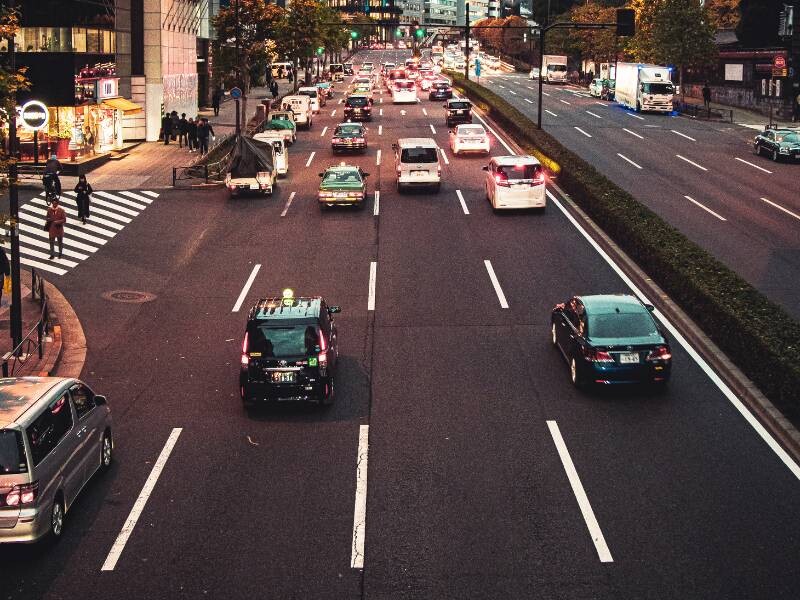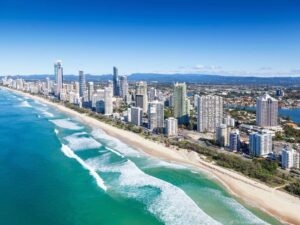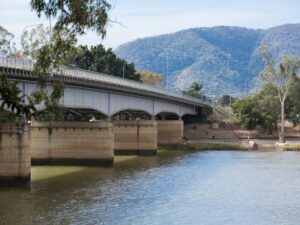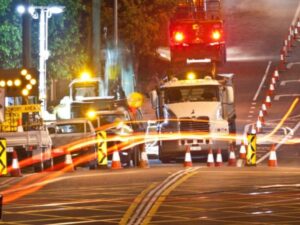When roadworks are happening outside a café, shopfront, or clinic, it’s not just traffic flow on the line — it’s someone’s livelihood.
At East Coast Traffic Control, we understand the delicate balance between getting the job done and keeping the local economy moving. Whether we’re managing a partial lane closure, footpath upgrade or major reseal, we go out of our way to ensure businesses stay open, customers can still access the site, and no one is left wondering how to get in the door.
Because shutting down lanes shouldn’t mean shutting down business.
Planning for people, not just vehicles
Every traffic control job comes with its technical requirements — signs, cones, offsets, and timing. But if that setup blocks foot traffic to a bakery or makes parking impossible for a clinic, it’s a problem.
That’s why we plan our setups with the whole picture in mind, not just the road. Our crews are briefed to look beyond the layout and consider:
- Where customers are walking from
- Where deliveries happen
- Whether there’s accessible parking nearby
- How signage might impact visibility or access
Even a single sign in the wrong place can stop a walk-in customer. We work to avoid that.
Clear detours and visual cues make all the difference
If access needs to change — whether for cars or foot traffic — we don’t just close it off and hope for the best. We make sure it’s clearly marked with:
- Directional signage: “Access via rear lane”, “Entry 20m ahead”, “Alternate parking available”
- Temporary footpaths and safe crossing points
- VMS boards for early warning and wider awareness
- Barrier taping and bollards to separate pedestrians from plant or machinery
When people know where to go and what to expect, they’re far more likely to keep showing up — even if there’s a bit of dust and noise nearby.
Communication with businesses is key
We don’t just work around businesses — we talk to them.
Before a setup goes live, our team will often speak directly with nearby traders to explain:
- What’s happening and how long it will take
- Where customers can park or enter
- When the busiest times will be
- Who to contact if there’s an issue
In some cases, we’ve even adjusted work timing to avoid interrupting lunchtime rushes or Saturday morning trade.
Our job is to make traffic control invisible — or at least, as painless as possible — for those who rely on foot traffic to stay afloat.
Real-world examples of access done right
We’ve worked across hundreds of high-street and small-town jobs, where access is everything. Some recent examples include:
- Maintaining shopfront access during a footpath reconstruction in a coastal town by installing temporary ramps and extending signage visibility.
- Re-routing parking and deliveries during a reseal in a busy retail precinct, working with council to ensure loading zones stayed functional.
- Overnight staging of high-impact setups to avoid peak trading hours in suburban business centres.
- Adjusting barricade positions after speaking with a small café owner who had regular customers using mobility aids.
It’s small changes like these that make a big difference.
We work with councils and contractors to minimise disruption
Whether it’s a civil contractor managing a streetscape upgrade or a council running a reseal program, we’re often the link between the site and the community.
That means we take responsibility for flagging issues early — not waiting for complaints to roll in. We review plans, walk the streets beforehand, and proactively identify where trouble might occur.
And when disruptions do happen, we’re on hand to adjust quickly, re-route access or update messaging so businesses aren’t left in the dark.
Because the community is always watching
Every roadwork project reflects not just on the contractor, but on the council and the community as a whole. Poor traffic control can turn a smooth project into a PR headache.
We help our clients stay on the front foot by:
- Thinking like a customer
- Communicating clearly
- Adapting quickly
- And delivering safe, clean, professional setups
It’s not just about the cones. It’s about respect — for the road, the job, and the people who live and work around it.
FAQs
Do you talk to local businesses before starting work nearby?
Yes. Wherever possible, we liaise directly with affected businesses to explain the setup, answer questions, and ensure they feel supported.
Can you set up signage to help customers find alternate access?
Absolutely. We can install directional signage, VMS boards, and pedestrian detours to guide foot traffic clearly and safely.
What if there’s a complaint or issue during the job?
Our crews are trained to respond professionally and escalate quickly. We can adjust setups in real time to resolve access concerns.
Do you work with councils on communication plans?
Yes. We frequently support councils with messaging, signage, and access coordination as part of community-focused projects.
What regions do you cover for this type of work?
We operate across QLD and NSW, including high-footfall areas like Byron Bay, Noosa, Ballina, Gympie, and regional town centres.





